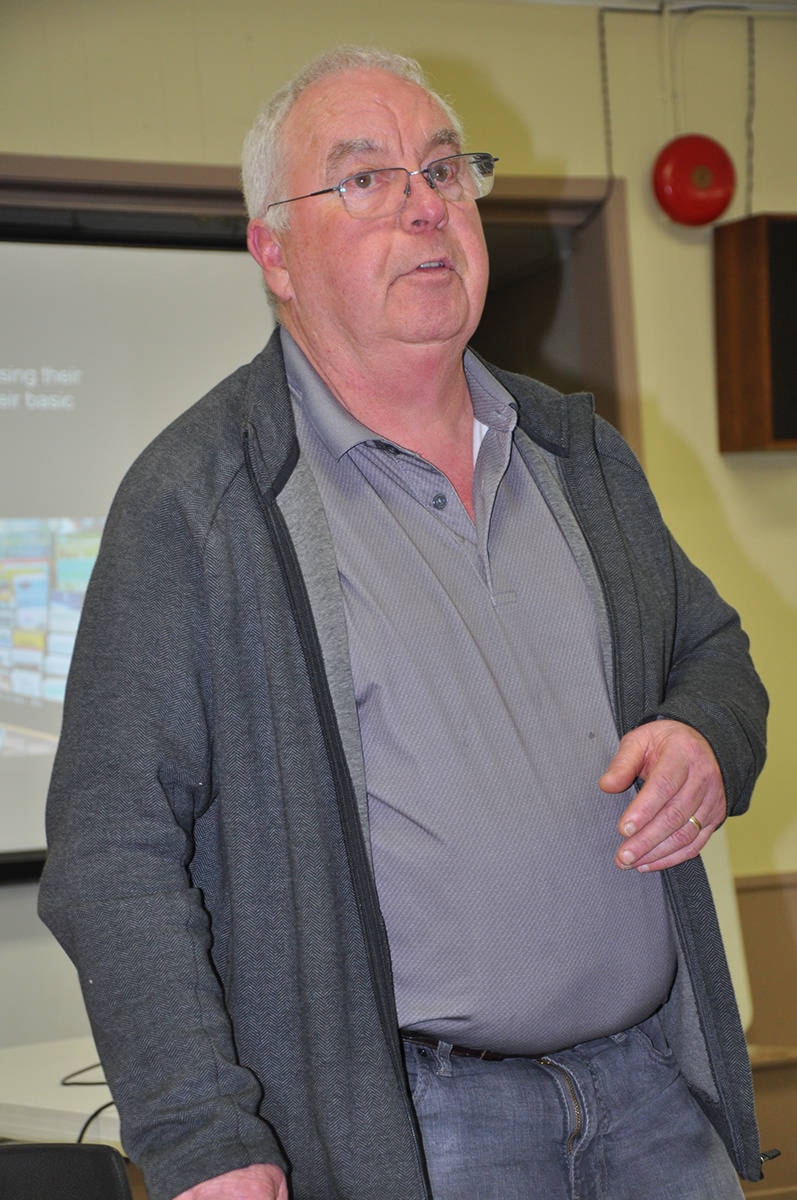The building boom continues in Lake Cowichan as the growth spurt that began four or five years ago in the region shows no signs of slowing down.
Mayor Rod Peters told the Cowichan Lake District Chamber of Commerce annual general meeting that 200 new lots are going to be developed in the coming year.
“Unfortunately the infrastructure is not keeping up,” Peters acknowledged, adding council is working on a five-year plan to establish priorities and complete projects such as the water treatment plant.
“I am trying to get an inventory of things that need do be done. [For example] the water system. We have fire hydrants that can’t be used because there’s not enough pressure. The sewage system is operating at close to capacity.”
Peters says the sewage system is going to be improved and should be more than adequate well into the 2030s once the work is completed.
“Streets in our town need a lot of work and there are so many projects that aren’t finished such as the sewage lagoon and the ball park.”
The mayor said Lake Cowichan would like to encourage more commercial and industrial development since those sectors pay a much higher rate of taxes.
Peters provided an update on the progress of plans to replace the existing weir on Cowichan Lake.
“It’s a two to three-year process just to get the engineering done,” he said. “Is it 100 per cent going ahead? Yes.”
Senior levels of government are kicking in funding to help pay for the preliminary work required to build the new weir. The Cowichan Valley Regional District, in collaboration with Cowichan Tribes, Paper Excellence Canada and the Cowichan Watershed Board, who submitted a joint application, will receive $4.08 million over three years for the work, with $1.3 million this fiscal year and the remaining money coming in the next two years, from the joint-federal/provincial BC Salmon Restoration and Innovation Fund.
When the project was announced last year, Area F CVRD director Ian Morrison said while the total costs of the weir project to its completion were yet to be determined, it wouldn’t fall to local taxpayers to cover it.
Peters says that hasn’t changed.
“Taxes go up,” Peters smiled, “but they won’t go up as a result of a new weir.”
Peters also noted that “management of the weir is going to be done by the federal government…not by Catalyst.”
The mayor said it will be at least four and likely six years before a new weir, a structure that could include a walkway with First Nations art, is in place.
